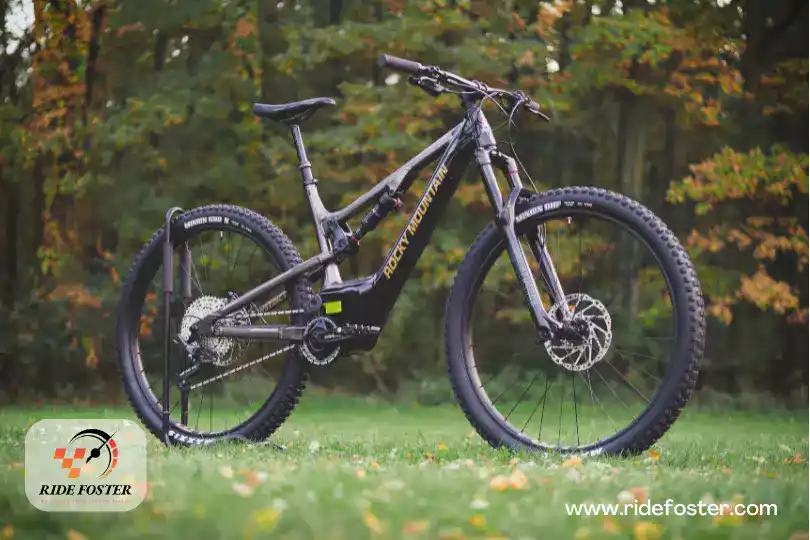Table of Contents
I. Introduction
Road bikes are designed for speed and efficiency on smooth pavement, making them ideal for road cycling and racing.
However, many cyclists wonder if road bikes can handle grass terrain and if it’s possible to take them off-road.
While road bikes are not specifically designed for off-road riding, they can handle short sections of grass or gravel with proper technique and caution.
It’s important to consider various factors before attempting to ride a road bike on grass terrain to ensure safety and maintain the bike’s performance.
Is it possible to ride a road bike on grass?
Many cyclists wonder if it is possible to ride a road bike on grass.
While road bikes are primarily designed for smooth and paved surfaces, they can be ridden on grass under certain conditions.
However, it’s important to consider a few factors before attempting to ride your road bike on grass.
By understanding these factors, you can make an informed decision and ensure a safe and enjoyable ride.

Factors to consider when riding a road bike on grass
Before taking your road bike onto grass, it’s essential to consider the following factors:
1.
Tire Type: Road bikes typically have narrow and smooth tires, which are not ideal for riding on grass.
Consider using wider tires with more tread to improve traction and stability on uneven surfaces.
2.
Terrain: The condition of the grass and the terrain you will be riding on play a significant role.
Freshly cut and well-maintained grass will provide better traction compared to long and uneven grass.
Additionally, flat and even terrain will be easier to navigate compared to hilly or bumpy surfaces.
3.
Skill Level: Riding a road bike on grass requires a certain level of skill and balance.
It may be more challenging to maintain control and stability compared to riding on paved surfaces.
Ensure that you have adequate cycling skills and experience before attempting to ride on grass.
4.
Safety: Always prioritize safety when riding on grass.
Be aware of potential hazards such as hidden obstacles, uneven ground, or wet surfaces.
Adjust your speed and be prepared for sudden changes in traction.
While road bikes are not specifically designed for off-road riding, with proper precautions and consideration of these factors, it is possible to ride a road bike on grass.
However, always ensure your safety and the integrity of your bike while exploring different terrains.

II. Road Bike vs. Mountain Bike
Differences between road bikes and mountain bikes
Before discussing whether road bikes can go on grass, it’s important to understand the fundamental differences between road bikes and mountain bikes.
Road bikes: These bikes are designed specifically for riding on paved roads.
They typically have lightweight frames, skinny tires, and drop handlebars, which allow for maximum speed and efficiency on smooth surfaces.
Mountain bikes: On the other hand, mountain bikes are built to handle off-road terrain.
They feature wider, knobby tires, a more robust frame, and suspension systems, making them suitable for tackling rough trails, dirt paths, and gravel roads.
Why road bikes are not designed for off-road terrain
Road bikes are not suited for grass or other off-road surfaces due to several factors:
- Tire traction: Road bike tires are designed for maximum speed and efficiency on smooth, paved surfaces.
The thin, smooth tires do not provide enough traction on uneven or slippery surfaces like grass.
- Suspension: Unlike mountain bikes, road bikes do not typically have suspension systems.
The lack of suspension makes it uncomfortable and difficult to ride on bumpy or uneven terrain, such as grass.
- Frame geometry: Road bikes have a more aggressive frame geometry, which positions the rider in a more aerodynamic and forward-leaning position.
This design is optimized for speed on paved surfaces, but it becomes less stable and more challenging to handle on uneven terrain.
While road bikes may be able to navigate short stretches of grass or gravel, they are not intended for extended off-road use.
It is best to stick to paved roads and smooth surfaces when riding a road bike.
III. Challenges of Riding a Road Bike on Grass
Riding a road bike on grass can pose several challenges that riders should be aware of.
These challenges include:
Traction and stability issues:
Grass is not a smooth and stable surface like pavement, which can make it difficult to maintain traction and stability while riding a road bike.
The uneven terrain and the potential for slippery spots can increase the risk of accidents or falls.
Potential damage to tires and rims:
Grass can be considerably rougher on road bike tires compared to the smooth surface of the road.
The uneven terrain and small debris, such as twigs or stones, can pose a risk of puncturing or damaging the tires and rims.
Considering these challenges, it is generally not recommended to ride a road bike on grass.
It is best to stick to paved surfaces designed for road biking to ensure a safe and enjoyable riding experience.
IV. Tips for Riding a Road Bike on Grass
Choosing appropriate tires
When riding a road bike on grass, it’s important to choose the right tires that can handle the terrain.
Look for tires that have a wider tread pattern or even consider getting gravel or cyclocross tires.
These tires provide better traction and stability on grassy surfaces, allowing you to ride more confidently.
Adjusting tire pressure for better grip
Another important tip is to adjust your tire pressure.
Lowering the tire pressure slightly can increase the surface area of the tire in contact with the ground, providing a better grip on grass.
However, be careful not to lower the pressure too much as it can cause pinch flats or make the bike feel sluggish on hard surfaces.
By following these tips, you can enjoy riding your road bike on grassy surfaces with more control and confidence.
Remember to always ride safely and be aware of your surroundings.
V. Alternative Options for Riding on Grass
Gravel bikes and cyclocross bikes
If you’re interested in riding on grass, it’s worth considering using a gravel bike or a cyclocross bike.
These types of bikes are specifically designed to handle off-road terrain, including grassy surfaces.
Here are some benefits of using these bikes on grass:
- Wider Tires: Gravel and cyclocross bikes typically have wider tires, which provide better traction and stability on uneven surfaces like grass.
- Strong Frames: These bikes are built with sturdy frames that can withstand the demands of off-road riding, including grassy terrain.
- Responsive Handling: Gravel and cyclocross bikes are designed for agile handling, allowing you to navigate through grassy areas with ease.
Consider exploring the options of gravel bikes and cyclocross bikes if you’re interested in riding on grass.
They offer the versatility and performance needed to tackle various off-road conditions.
Read:
VI. Conclusion
The limitations and risks of riding a road bike on grass
While road bikes are primarily designed for riding on paved surfaces, they can technically be ridden on grass.
However, there are several limitations and risks associated with doing so:
- Stability: Road bikes have narrow tires and a lightweight frame, making them less stable on uneven terrain like grass.
This can increase the risk of accidents and falls.
- Traction: Grass provides less traction compared to paved surfaces, making it harder to maintain control and pedal efficiently.
- Damage to bike: Riding a road bike on grass can expose it to more debris and moisture, potentially leading to damage to the components and drivetrain.
Other options to consider for off-road riding
If you’re looking to ride off-road or on grassy surfaces frequently, it’s recommended to consider alternative options such as:
- Gravel bikes: These bikes are designed for both on-road and off-road riding, with wider tires and more stable frames.
- Mountain bikes: Specifically designed for off-road riding, mountain bikes offer better suspension, wider tires, and improved traction on uneven terrain.
By choosing a bike specifically designed for off-road riding, you can enjoy a safer and more enjoyable experience on grass and other non-paved surfaces.
Sources:

![Can You Put Gravel Tires On a Road Bike? [Pros & Cons] Can You Put Gravel Tires On a Road Bike](https://www.ridefoster.com/wp-content/uploads/2022/11/Can-You-Put-Gravel-Tires-On-a-Road-Bike.webp)




